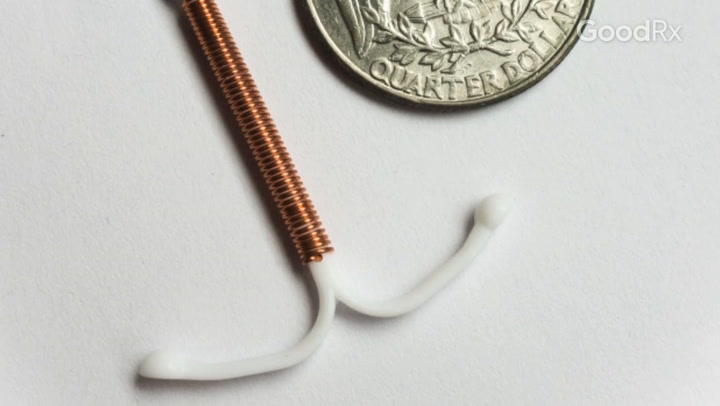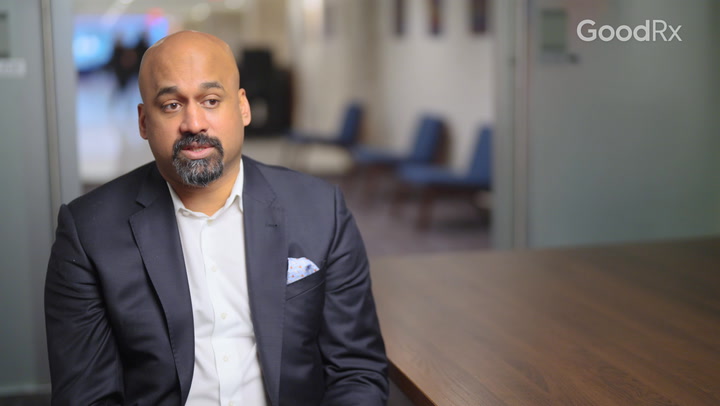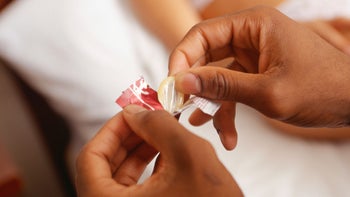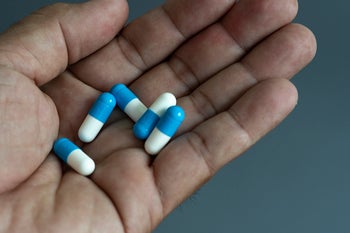
Premature Ejaculation: Symptoms, Causes, and Treatments
Key takeaways:
Premature ejaculation is a very common sexual health problem in which semen is released too quickly.
Many things can cause premature ejaculation like medical conditions, relationship issues, and excessive alcohol use.
There are many treatment options for premature ejaculation. These include medications and non-medication options like exercises and counseling sessions.

You may feel embarrassed if you’ve ever experienced premature ejaculation. But you’re not alone. Research shows premature ejaculation is the most common sexual complaint of men — affecting about 30% of those having sex. And this can also cause distress for the man or his partner.
Premature ejaculation is very common, and there are several treatment options available. But in order to find the right treatment option for you, you first need to understand what’s causing your premature ejaculation. Let’s take a look at the potential causes and discuss what can be done to treat it.
What is premature ejaculation?
Premature ejaculation is when a man climaxes and releases semen sooner than he wants to. This condition can be described in different ways. The American Urological Association identified symptom criteria to diagnose premature ejaculation. These criteria include:
Ejaculation that occurs in 2 minutes or less
A shorter time to ejaculation than in the past
Inability to delay ejaculation always (or almost always)
Emotional distress and/or other negative consequences from premature ejaculation
If one or more of these criteria apply to you, you may have premature ejaculation. This problem can be broken down into two main types: primary (lifelong) or acquired. If you’ve had these symptoms since you started having sex, you may have lifelong premature ejaculation. If these symptoms developed later, you may have acquired premature ejaculation. In this case, there's often an underlying medical or mental health reason.
There are also subtypes of premature ejaculation: normal variant and subjective. Normal variant premature ejaculation is when someone has a short ejaculation time occasionally, but not all the time. Subjective premature ejaculation is when you feel like your ejaculation time is short, even though it’s actually more than 2 minutes.
Knowing the different types of premature ejaculation is helpful for finding a possible cause and the right treatment.
Read more like this
Explore these related articles, suggested for readers like you.
What causes premature ejaculation?
While there are ideas about what may cause premature ejaculation, none of them have been confirmed. There are several physical and psychological causes that have been proposed by researchers. Let’s review them here.
Physical causes
Urologic conditions: These include conditions such as chronic prostatitis and varicocele, which can affect how the penis functions.
Hypersensitive penis: Research shows an increased sensitivity of the penis can cause some people to ejaculate faster.
Medical conditions: Conditions such as thyroid conditions and diabetes can lead to hormonal changes that affect sexual function.
Low serotonin levels: People with lifelong premature ejaculation may have genetic differences in a serotonin receptor that can lead to premature ejaculation.
Nerve damage: Neurologic conditions such as spinal cord injuries or multiple sclerosis, can also lead to premature ejaculation.
Psychological causes
Mental health conditions: Anxiety and depression can affect sexual experiences and cause premature ejaculation.
Past sexual abuse: Men who are the victims of childhood sexual abuse are twice as likely to experience premature ejaculation.
Relationship problems: Issues in a relationship, or feeling nervous or uncomfortable with your partner, can cause premature ejaculation.
Body image concerns: A negative body image may impact sexual function and lead to premature ejaculation in some people.
Alcohol misuse: Alcohol misuse is the one of the most common causes of sexual dysfunction and accounts for a significant amount of premature ejaculation.
Treatments for premature ejaculation
There are both medication and non-medication treatments for premature ejaculation. But if another medical condition is causing your premature ejaculation, it’s important to treat that first. Not only can this improve your overall health, but it may also improve your ejaculation time.
Here are some techniques and medications to help treat premature ejaculation.
Stop-start technique
With this technique, you stimulate the penis until right before orgasm, then stop stimulation until the urge to ejaculate is gone. This technique may help you better recognize your body’s signals, which can help stop premature ejaculation during sex.
Squeeze technique
This method also involves stimulating the penis to the point just before orgasm. At this moment, you put a little bit of pressure on the head of your penis and wait about 30 seconds. This helps decrease arousal for a short period of time and helps prevent ejaculating too quickly.
Medications for premature ejaculation
There are no medications that are FDA-approved to treat premature ejaculation. But there are pills and topical medications that have been used off-label with some success. Here are a few that have shown some promise:
Selective serotonin reuptake inhibitors (SSRIs): These increase serotonin levels, which can improve premature ejaculation, especially in those with lifelong symptoms. Examples of SSRIs include sertraline (Zoloft) and paroxetine (Paxil).
Tramadol: One study found that tramadol more than tripled the time before ejaculation when used daily or sporadically. Plus, the rate of sexual activity also increased significantly and there was more sexual satisfaction.
Topical numbing medications: Topical anesthetics may help reduce penile sensitivity and delay ejaculation. This includes medications like lidocaine (EMLA cream).
Phosphodiesterase 5 inhibitors (PDE5Is): These medications (like Cialis, Viagra or Stendra) are often prescribed off-label for premature ejaculation.
Therapy and stress reduction
Therapy can help reduce anxiety and stress that may be causing premature ejaculation. It can also help when premature ejaculation is causing additional stress for a man, his partner, and their relationship.
Therapy sessions can effectively address the underlying cause of premature ejaculation. And it can help couples to recognize its impact on their relationship. Adding therapy to medication has been shown to be more effective than medication alone.
Using thicker condoms
Another technique you can try is wearing a thicker condom to reduce sensitivity. Thickened condoms can help delay ejaculation. They can also help increase total erection time and average hardness of the erection. They may also improve the overall quality of sexual intercourse.
There are several different types of condoms available that work to decrease sensation. These condoms may help to stop premature ejaculation.
Pelvic floor exercises
You could consider pelvic floor exercises as a treatment for premature ejaculation. Pelvic floor exercises, also known as kegel exercises, involve contracting and relaxing pelvic muscles. These work to strengthen your pelvic muscles and their nerve connections. This may help you gain better control over ejaculation during sexual intercourse.
Kegel exercises for men are useful for many conditions. They can help bowel and bladder incontinence, erectile dysfunction, and premature ejaculation.
How to prevent premature ejaculation
There’s no way to predict or prevent the first episode of premature ejaculation. It’s likely to happen to most men at least once in their lifetime. But if premature ejaculation continues to happen on a regular basis, there are a few tips you can try.
Masturbation: Masturbating 1 to 2 hours before sex may help prevent you from ejaculating too quickly the next time.
Distracting yourself: It may be helpful to think about other things during sex to try and prevent premature ejaculation.
Taking a break: If you feel yourself about to have an orgasm, stop and take a short break until the sensation goes away. It may also help to extend foreplay to delay sex and the opportunity to climax.
Planning ahead: If you’re using medications, numbing creams, or condoms, make sure they’re on hand and available to use.
Does Viagra help premature ejaculation?
Viagra (sildenafil citrate) may offer some benefits as a treatment for premature ejaculation, but the evidence isn’t strong. In one study, researchers found no significant improvement in ejaculation time. But participants in the study reported feeling more confident and had greater sexual satisfaction. And they were able to achieve a second erection more quickly after ejaculating.
Another study showed that medications like Viagra could be a more promising treatment for premature ejaculation. But only in cases where erectile dysfunction was also present. It doesn’t seem to work as well in those with premature ejaculation alone.
Combination treatments for premature ejaculation may work better. When paired with an SSRI, medications like Viagra seem to work better in treating premature ejaculation than when taken alone.
Erectile dysfunction vs. premature ejaculation: What’s the difference?
While it’s easy to confuse erectile dysfunction (ED) with premature ejaculation, they’re two separate issues. However, you can develop premature ejaculation if you have ED. This may be due to anxiety surrounding having ED. For example, worrying about losing your erection may lead to ejaculating too quickly.
Premature ejaculation can also be mistaken for ED since the penis may deflate after ejaculation. But this deflation is not ED. The best way to get the right diagnosis and proper treatment is to share what happens when you have sex with your primary care provider. This includes talking about any difficulties you have getting an erection, how quickly you ejaculate, and whether you can control it.
When to seek medical attention
If you and your partner are happy with how long it takes you to ejaculate, there’s probably no need to see a healthcare professional about it. But if premature ejaculation is causing you or your partner distress, a medical professional can help. Some other reasons you should seek care include:
You have other medical symptoms, like trouble urinating, changes in your weight, or loss of sensation.
You’ve started a new medication, like medications to treat Parkinson’s disease or lithium.
You’re feeling anxious, depressed, or hopeless.
You’ve experienced sexual abuse in the past.
Remember, there’s no magic cure for premature ejaculation. But a healthcare professional can diagnose and treat underlying medical conditions. They can also help you find the right combination of treatments to make your sexual experiences more satisfying.
The bottom line
Even though premature ejaculation can be frustrating, most people don’t seek care for the condition. If you’re having premature ejaculation, talk with your partner and healthcare professional to figure out what may be causing it. Keep in mind that there isn’t a one-size-fits-all treatment for premature ejaculation. So, it may take some time to find something that works for you.
Why trust our experts?


References
Almeida, P. A., et al. (2023). Premature ejaculation after lithium treatment in a patient with bipolar disorder. Case Reports in Psychiatry.
Althof, S. (2006). The psychology of premature ejaculation: Therapies and consequences. The Journal of Sexual Medicine.
Arackal, B. S., et al. (2007). Prevalence of sexual dysfunction in male subjects with alcohol dependence. Indian Journal of Psychiatry.
Asadpour A. A., et al. (2014). The effects of varicocelectomy on the patients with premature ejaculation. Nephro-Urology Monthly.
Bates, J. N., et al (2020). Effect of thyroid hormone derangements on sexual function in men and women. Sexual Medicine Reviews.
Calabrò, R. S., et al. (2011). Neurogenic ejaculatory disorders: Focus on current and future treatments. Recent Patents on CNS Drug Discovery.
Dhaliwal, A., et al. (2023). PDE5 inhibitors. StatPearls.
El-Hamd, M. A., et al. (2019). Premature ejaculation: An update on definition and pathophysiology. Asian Journal of Andrology.
El-Sakka, A. I. (2003). Premature ejaculation in non-insulin-dependent diabetic patients. International Journal of Andrology.
Familydoctor.org. (2024). Premature ejaculation. American Academy of Family Physicians.
Guo, L., et al. (2017). Significance of penile hypersensitivity in premature ejaculation. Scientific Reports.
InformedHealth.org. (2019). Premature ejaculation: What can I do on my own?
Khan, A. H., et al. (2013). Tramadol use in premature ejaculation: Daily versus sporadic treatment. Indian Journal of Psychological Medicine.
Laumann, E. O., et al. (2005). Sexual problems among women and men aged 40-80 y: Prevalence and correlates identified in the Global Study of Sexual Attitudes and Behaviors. International Journal of Impotence Research.
Levitan, J., et al. (2019). The relationship between body image and sexual functioning among gay and bisexual men. Journal of Homosexuality.
Lopes, J. (2018). Parkinson’s medications may cause premature ejaculation, case report suggests. Parkinson’s News Today.
Martyn-St. James, M., et al. (2015). Topical anaesthetics for premature ejaculation: A systematic review and meta-analysis. Sexual Health.
McMahon, C. G., et al. (2005). Efficacy of sildenafil citrate (Viagra) in men with premature ejaculation. Journal of Sexual Medicine.
McMahon, C. G., et al. (2006). Efficacy of type-5 phosphodiesterase inhibitors in the drug treatment of premature ejaculation: A systematic review. BJU International.
McMahon, C. G., et al. (2016). The pathophysiology of acquired premature ejaculation. Translational Andrology and Urology.
Nature Reviews Urology. (2008). Genetic polymorphism identified in men with lifelong premature ejaculation.
NHS. (2023). Can premature ejaculation be controlled?
Parnham, A., et al. (2016). Classification and definition of premature ejaculation. Translational Andrology and Urology.
Pastore, A. L., et al. (2014). Pelvic floor muscle rehabilitation for patients with lifelong premature ejaculation: A novel therapeutic approach. Therapeutic Advances in Urology.
Rajkumar, R. P., et al. (2014). The association of anxiety with the subtypes of premature ejaculation: A chart review. The Primary Care Companion for CNS Disorders.
Raveendran, A. V., et al. (2021). Premature ejaculation - current concepts in the management: A narrative review. International Journal of Reproductive BioMedicine.
Rosen, R. C. (2000). Prevalence and risk factors of sexual dysfunction in men and women. Current Psychiatry Reports.
Saleh, R., et al. (2021). An update on the treatment of premature ejaculation: A systematic review. Arab Journal of Urology.
Shindel, A. W., et al. (2022). Disorders of ejaculation: An AUA/SMSNA guideline. The Journal of Urology.
Siegel, A. L. (2014). Pelvic floor muscle training in males: Practical applications. Urology.
Urology Care Foundation. (2023). What is premature ejaculation?
Waldinger, M. D. (2016). The pathophysiology of lifelong premature ejaculation. Translational Andrology and Urology.
Wang, Z., et al. (2022). Efficacy evaluation of thickened condom in the treatment of premature ejaculation. Translational Andrology and Urology.
Xia, Y., et al. (2016). Relationship between premature ejaculation and depression: A PRISMA-complaint systematic review and meta-analysis. Medicine.
Yepes, S. A., et al. (2020). Prostatitis and premature ejaculation: Two enemies of masculinity. The Journal of Medical Research.





























